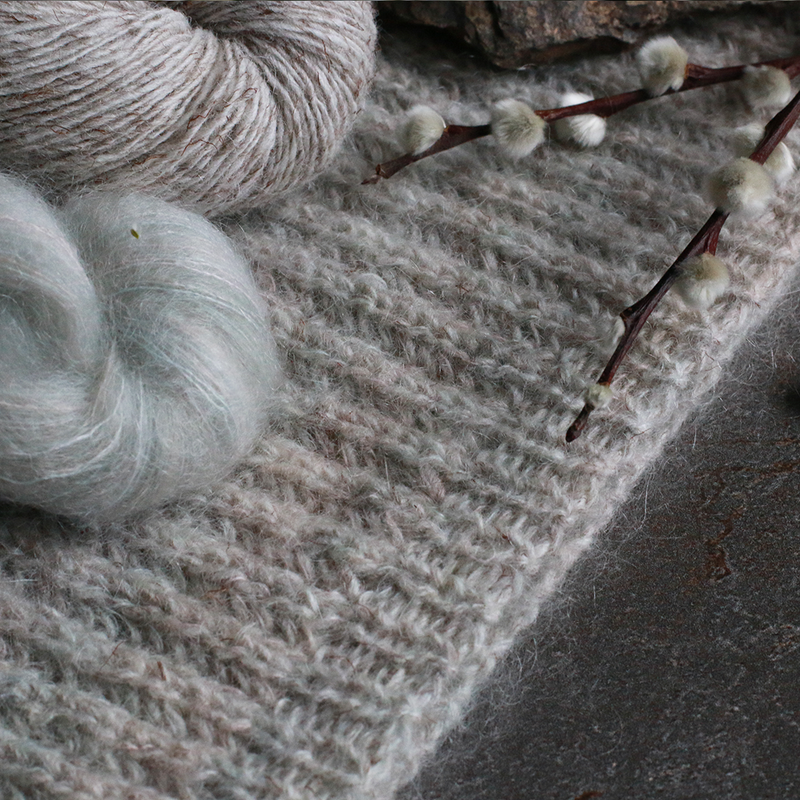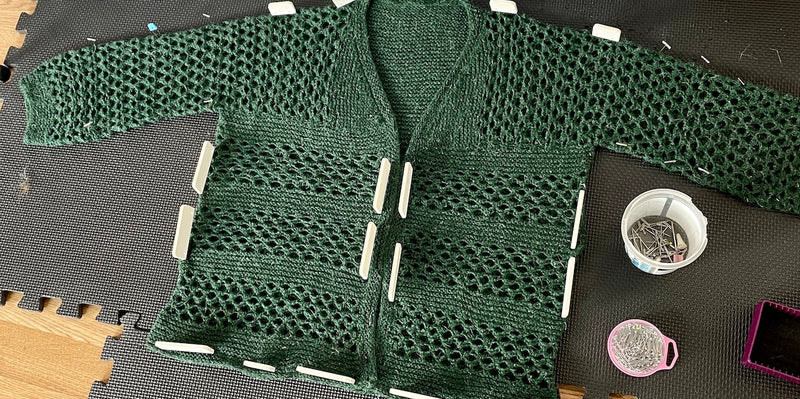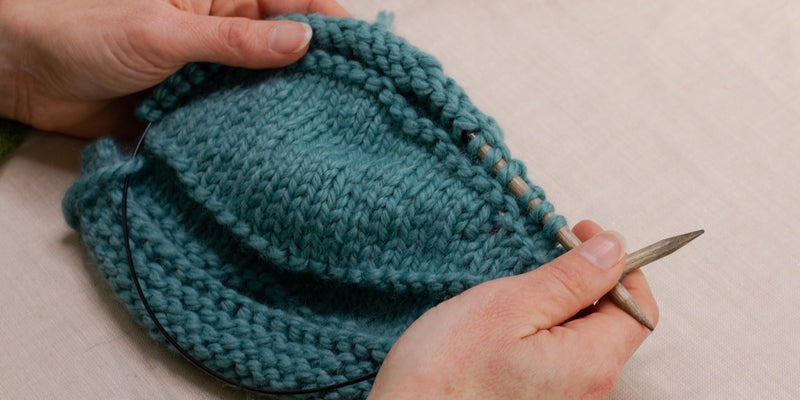Cables can intimidate a lot of knitters; they look complex and seem difficult. There are huge variations in cable patterns but to start with learning how to do some basic cable stitches can open up a world of new patterns. One of the reasons I love cables so much is the texture they create. The stitches are moving across the surface of the work so it changes it from flat to three-dimensional.

I still remember the first cable I ever did, I was astonished at how straightforward it was! I had built cables up in my mind as a huge milestone and difficult skill to master! I was working on a basic stockinette stitch baby sweater and I just added one single four stitch cable to the front. It wasn’t complex but it was enough to allow me to jump in and it opened up the world of cables for me!
So what is a cable?
At it’s most basic cables are just stitches crossed over each other. You do this by moving some stitches to an extra needle (the cable needle) and holding them to the front or back of the work. Then you knit (or purl) the next few stitches, and go back to work the stitches that you had held. These cables can be worked over any number of stitches, either crossing an even or uneven number of stitches.
So you can see that cables don’t have to begin as a complex, difficult skill. This is something you can work up to as you begin to understand how they work. Cables begin increasing in complexity when you introduce purl as well as knit stitches. This is because your cables can now start travelling across your work as well as just being in a straight line vertically. From there you can also start using cable crosses to ‘hide’ a change from a knit to a purl stitch so that you can create stitch patterns that appear and disappear within the cable panel.
Here are a few examples of all of these different types:
- Basic vertical cable that repeats the same cable cross in a vertical line.

Cable from ‘Killybegs’ in Contemporary Irish Knits. - A travelling cable that allows the knit stitches to cross over the purl background so that the cables ‘travel’.

Cable from ‘Ardara’ in Contemporary Irish Knits. - A more complex type of cable where you have stitches changing between knit and purl behind the cable cross.

In the first of my cable tutorials I’m introducing a basic 2 by 2 knit cable crossed to the right and the left. I’ve explained how you work it in the video and the text describes what that particular cable would look like when drawn in a chart.






